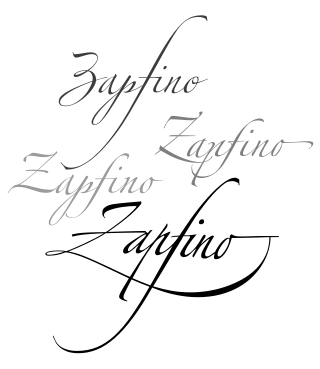Related Research Articles

The Semantic Web, sometimes known as Web 3.0, is an extension of the World Wide Web through standards set by the World Wide Web Consortium (W3C). The goal of the Semantic Web is to make Internet data machine-readable.

A website is a collection of web pages and related content that is identified by a common domain name and published on at least one web server. Websites are typically dedicated to a particular topic or purpose, such as news, education, commerce, entertainment or social networking. Hyperlinking between web pages guides the navigation of the site, which often starts with a home page. As of May 2023, the top 5 most visited websites are Google Search, YouTube, Facebook, Twitter, and Instagram.
Web design encompasses many different skills and disciplines in the production and maintenance of websites. The different areas of web design include web graphic design; user interface design ; authoring, including standardised code and proprietary software; user experience design ; and search engine optimization. Often many individuals will work in teams covering different aspects of the design process, although some designers will cover them all. The term "web design" is normally used to describe the design process relating to the front-end design of a website including writing markup. Web design partially overlaps web engineering in the broader scope of web development. Web designers are expected to have an awareness of usability and be up to date with web accessibility guidelines.
A HTML editor is a program used for editing HTML, the markup of a web page. Although the HTML markup in a web page can be controlled with any text editor, specialized HTML editors can offer convenience, added functionality, and organisation. For example, many HTML editors handle not only HTML, but also related technologies such as CSS, XML and JavaScript or ECMAScript. In some cases they also manage communication with remote web servers via FTP and WebDAV, and version control systems such as Subversion or Git. Many word processing, graphic design and page layout programs that are not dedicated to web design, such as Microsoft Word or Quark XPress, also have the ability to function as HTML editors.

Matthew Carter is a British type designer. A 2005 New Yorker profile described him as 'the most widely read man in the world' by considering the amount of text set in his commonly used typefaces.

Jeffrey Zeldman is an American entrepreneur, web designer, author, podcaster and speaker on web design. He is the co-founder of A List Apart Magazine and the Web Standards Project. He also founded the design studios Happy Cog and studio.zeldman, and co-founded the A Book Apart imprint and the design conference An Event Apart.
Web development is the work involved in developing a website for the Internet or an intranet. Web development can range from developing a simple single static page of plain text to complex web applications, electronic businesses, and social network services. A more comprehensive list of tasks to which Web development commonly refers, may include Web engineering, Web design, Web content development, client liaison, client-side/server-side scripting, Web server and network security configuration, and e-commerce development.

Direct marketing is a form of communicating an offer, where organizations communicate directly to a pre-selected customer and supply a method for a direct response. Among practitioners, it is also known as direct response marketing. In contrast to direct marketing, advertising is more of a mass-message nature.
The social web is a set of social relations that link people through the World Wide Web. The social web encompasses how websites and software are designed and developed in order to support and foster social interaction. These online social interactions form the basis of much online activity including online shopping, education, gaming and social networking services. The social aspect of Web 2.0 communication has been to facilitate interaction between people with similar tastes. These tastes vary depending on who the target audience is, and what they are looking for. For individuals working in the public relation department, the job is consistently changing and the impact is coming from the social web. The influence held by the social network is large and ever changing.

In typography, text or font in all caps contains capital letters without any lowercase letters. For example: THIS TEXT IS IN ALL CAPS. All-caps text can be seen in legal documents, advertisements, newspaper headlines, and the titles on book covers. Short strings of words in capital letters appear bolder and "louder" than mixed case, and this is sometimes referred to as "screaming" or "shouting". All caps can also be used to indicate that a given word is an acronym.
A spacer GIF is a small, transparent GIF image that is used in web design and HTML coding. They were used to control the visual layout of HTML elements on a web page, at a time when the HTML standard alone did not allow this. They became mostly obsolete after the browser wars-fueled addition of layout attributes to HTML 2.0 table tags, and were mostly unused by the time Cascading Style Sheets became widely adopted.

Zapfino is a calligraphic typeface designed for Linotype by typeface designer Hermann Zapf in 1998. It is based on an alphabet Zapf originally penned in 1944. As a font, it makes extensive use of ligatures and character variations.
Tableless web design is a web design method that avoids the use of HTML tables for page layout control purposes. Instead of HTML tables, style sheet languages such as Cascading Style Sheets (CSS) are used to arrange elements and text on a web page.
In HTML, div and span tags are elements used to define parts of a document, so that they are identifiable when a unique classification is necessary. Where other HTML elements such as p (paragraph), em (emphasis), and so on, accurately represent the semantics of the content, the additional use of span and div tags leads to better accessibility for readers and easier maintainability for authors. Where no existing HTML element is applicable, span and div can valuably represent parts of a document so that HTML attributes such as class, id, lang, or dir can be applied.

NetObjectsFusion (NOF) is a web design tool, from 1996 to 2001 developed and distributed by NetObjects, Inc., marketed from 2001 until 2009 by Web.com, which bought the application in 2001, and from July 2009 on distributed again by the re-established NetObjects, Inc.
LinkExchange was a popular Internet advertising cooperative, similar in function to a webring, originally known as Internet Link Exchange or ILE.

Web typography, like typography generally, is the design of pages – their layout and typeface choices. Unlike traditional print-based typography, pages intended for display on the World Wide Web have additional technical challenges and – given its ability to change the presentation dynamically – additional opportunities. Early web page designs were very simple due to technology limitations; modern designs use Cascading Style Sheets (CSS), JavaScript and other techniques to deliver the typographer's and the client's vision.
The following outline is provided as an overview of and topical guide to web design and web development, two very related fields:

Typewise is a Swiss deep tech company that builds text prediction AI. In January 2022, the company filed a patent for its technology which it claims outperforms that of Google's and Apple's.
David G. Opstad is a retired American computer scientist specializing during his career in computer typography and information processing, leading to several breakthroughs. Opstad was a contributor to Unicode 1.0, together with Joe Becker, Lee Collins, Huan-mei Liao, and Nelson Ng.
References
- ↑ "Trove search results for 'creator:"Siegel, David, 1959-"'". Trove. Retrieved 2017-12-01.
- 1 2 "David Siegel". Font Bureau. 1996. Archived from the original on 1997-01-16. Retrieved 2017-11-26.
- ↑ Devroye, Luc. "David Siegel". Devroye.org. Retrieved 2017-11-28.
- ↑ Rifkin, Glenn (1995-11-27). "Increasingly, Top Designers Are Drawn to the Web". The New York Times. ISSN 0362-4331 . Retrieved 2017-11-30.
- ↑ Mieszkowski, Katharine (2000-03-03). "Web Sight – Let Your Customers Lead". Fast Company. Retrieved 2017-11-26.
- 1 2 Kapica, Jack (October 20, 1995). "What makes a great Web page". The Globe and Mail. Toronto.
- ↑ Siegel, David (1996). Creating Killer Web Sites: The Art of Third-generation Site Design (1st ed.). Carmel: Hayden. ISBN 1-56830-289-4.
- ↑ Siegel, David (1997). Creating Killer Web Sites: The Art of Third-generation Site Design (2nd ed.). Indianapolis: Hayden. ISBN 1-56830-433-1.
- ↑ Veen, Jeffrey (July 1998). "Lesson 1: The Foundations of Web Design". Webmonkey. Archived from the original on 1999-08-29.
- ↑ Batschelet, Margaret (2009-03-26). "Dionysius and Savonarola: The Historic Split in Web Design". In Joseph R. Chaney; Judd Ethan Ruggill; Ken S. McAllister (eds.). The Computer Culture Reader. Newcastle: Cambridge Scholars Publishing. pp. 192–211. ISBN 978-1-4438-0666-4.
- ↑ Gruber, Jordan S. (1997-02-01). "Outta Site". Wired.
- ↑ Siegel, David (1997-04-11). "The Web is Ruined and I Ruined it". Web Review. Archived from the original on 1997-04-14. Retrieved 2017-09-09.
- 1 2 Walker, David (1998-11-03). "Siegel goes for sensible". Sydney Morning Herald. Sydney. p. 6.
- ↑ Siegel, David (1997). Secrets of successful Web sites : project management on the World Wide Web. Indianapolis, IN: Hayden Books. ISBN 9781568303826.
- ↑ Siegel, David (1999-10-11). Futurize Your Enterprise: Business Strategy in the Age of the E-customer (1st ed.). New York: John Wiley & Sons. ISBN 978-0-471-35763-6.
- ↑ Siegel, David (2010-04-29). Pull: The Power of the Semantic Web to Transform Your Business (1st ed.). New York: Portfolio. ISBN 978-1-59184-277-4.
- ↑ MacManus, Richard (2010-03-30). "David Siegel: From Killer Web Sites to Semantic Web". ReadWrite. Retrieved 2017-11-30.
- ↑ Volpicelli, Gian (2017-07-14). "The $3.8bn cryptocurrency bubble is a huge deal. But it could break the blockchain". Wired. Retrieved 2017-11-28.